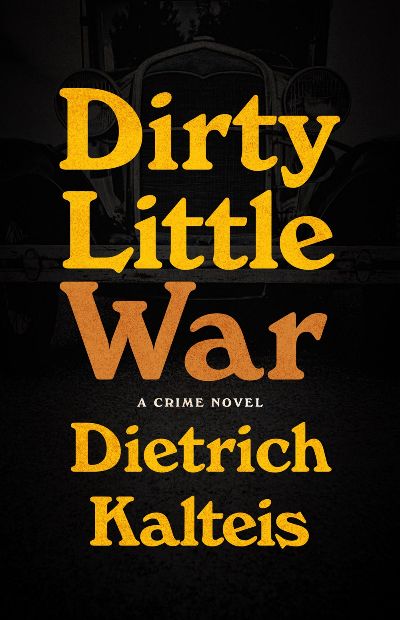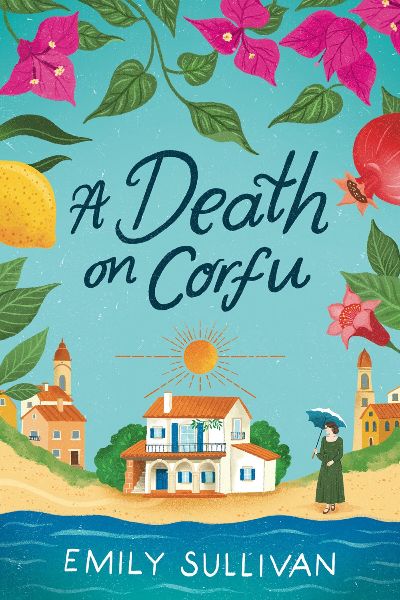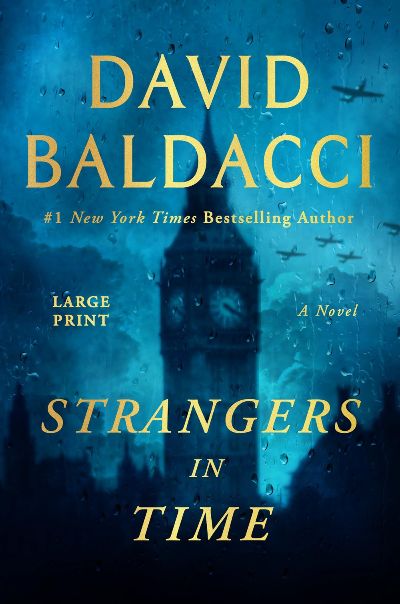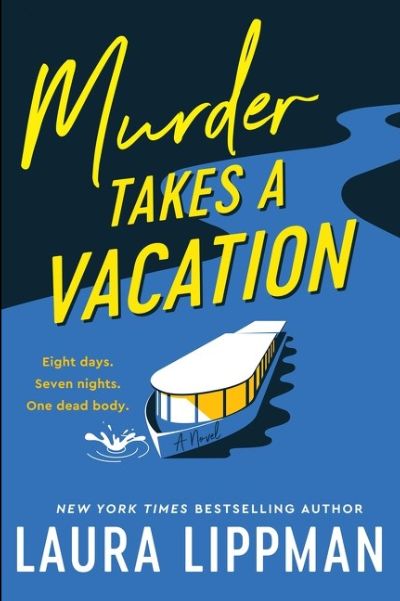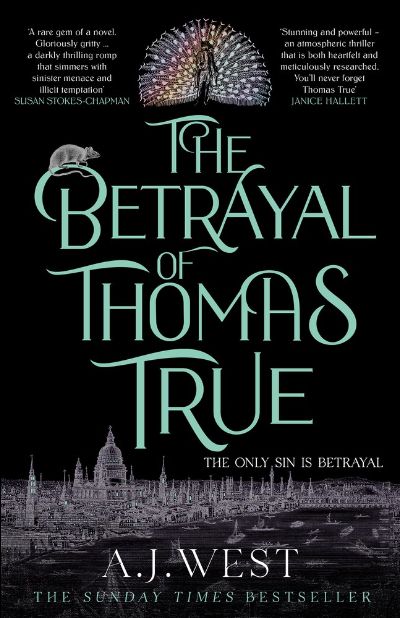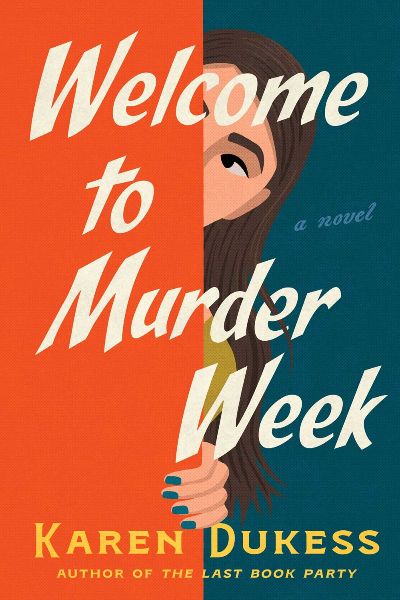Taking a dive is not Huckabee Waller’s style, much to the displeasure of the gangsters taking bets on the bare-knuckle fights near Chicago’s stockyards. It’s 1920, and Prohibition is the law of the land. Huck, who hopped a boxcar heading north after killing a pimp in New Orleans, turns to earning a living in illegal boxing matches. Impressed by Huck’s pugilistic skills and his past as a Louisiana moonshine runner, Dean O’Banion, head of the notorious North Side Gang, recruits Huck into smuggling booze across the Canadian border. Huck also runs a sideline as security for John D. Hertz’s Yellow Cab Company, which is involved in a vicious and violent competition with Morris Markin’s Checker Taxi. Soon Huck is rolling in dough, but his new luxurious lifestyle comes at a cost. When his new wife, Karla, urges him to find more legitimate employment, hitman Gypsy Doyle reminds Huck that the only way out “is feet first and horizontal.” Winner of the 2022 Crime Writers of Canada Award of Excellence for Best Crime Novel (for Under an Outlaw Moon), Kalteis has written a tough, epic historical noir that covers the most tumultuous decade in Chicago’s mob history. The Zelig-like Huck encounters infamous mobsters of the era (O’Banion, Johnny Torrio, Vincent Drucci, Al Capone) and becomes tangentially involved in some of the most notorious killings (St. Valentine’s Day massacre). As the body count rises, Kalteis’s punchy, hard-boiled prose vividly captures the brutality behind the glitz of the Jazz Age. Fans of Max Allan Collins’s Nathan Heller historical mysteries and The Road to Perdition will enjoy this gritty novel.
Review
The island of Corfu at the turn of the 20th century, with its native Greek population, large British expat community, and tensions therein, provides an excellent background for crime fiction. When her husband died unexpectedly several years ago, Minnie Harper was left with two children to raise on a modest income, with a deathbed promise to her husband that the family would remain in Corfu. Well-educated Minnie isn’t in the position to turn down a side gig, so when she is asked by her neighbor Stephen Dorian—a well-known, and handsome, mystery author—to type the manuscript of his latest book, she can only say yes. Despite her loathing of the man. But just as the two seem to settle into a disagreeable routine, Minnie discovers that one of the island’s young Greek women, who works as a maid, has been murdered. And the British community is doing its very best to ignore the murder, if not actually suppress it, while the local Greeks, for different reasons, are keeping their lips sealed. But Minnie isn’t about to let justice go undone, and with the help of Stephen, she heads off where no British woman has gone before her. Fans of The Durrells in Corfu, a hugely popular Masterpiece Theater drama set in the ‘30s, will appreciate this prequel of sorts, as will fans of cozy historical mysteries by Rhys Bowen, Jacqueline Winspear, and Amanda Flower.
Nova Davies has relocated from London to a remote Cornish seaside town, in part to be with her fiancé, whom she is set to marry in a little more than a week. While Nova loves her job as a social worker in the local community center, she can’t help but be a bit frustrated by her clients. Must the five members of her book group—a real bunch of misfits if there ever was one—argue about everything? But that’s just the beginning of a series of misfortunes, all of which seem to point to Nova. First one of their own, a book group participant, disappears, only to have a dead body show up in his house. Then a significant sum of money, earmarked to repair the community center’s ancient roof, goes missing—could Nova really have been so dizzy that she forgot to lock up the building? There’s a lot of fun to be had here, from Phyllis, an Agatha Christie superfan who insists on using Christie’s plots to solve the murder and find the funds, to Nora, whose life couldn’t become more complicated thanks to a full-on control freak of a mother-in-law and a mom who’s stranded in South America, likely to miss her wedding. And the fiancé? Please dump him. A delight from start to finish, and sure to please cozy readers who appreciate strong characters, a great community setting, and a dollop of criminal activity. For readers who enjoy Lucy Gilmore and Emily Henry.
The horrors of war are reflected in the lives of three people in Baldacci’s (A Calamity of Souls) latest. Fourteen-year-old Charlie Matters lives with his grandmother in cramped conditions. She thinks Charlie is spending his weekdays in school, but he has quit and spends the day roaming the streets, stealing food and money to survive. His goal is to eventually enlist and fight the Germans for taking away his parents and his sense of safety. When he steals from Ignatius Oliver’s bookshop, rather than demanding punishment for Charlie, Ignatius treats him well, almost like a father would. Like Charlie, Ignatius is dealing with loss, but it’s his wife instead of his parents. When 15-year-old Molly Wakefield returns to London after spending time away from the big city and conflict, she is horrified to learn her parents did not survive the bombing. The three bond, throughout the war trusting and protecting one another from a relentless enemy and secrets they can’t see coming. Baldacci chronicles the story of this makeshift family brought together by circumstances out of their control and how they can survive and confront whatever awaits. The author does a terrific job of transporting the reader back in time to a tumultuous period of living in London, and readers will practically smell the smoke and feel surrounded by rubble from the shattered buildings. Another great tale from a grandmaster storyteller.
Readers of this author’s Tess Monaghan series might remember Muriel Blossom as a minor character. She’s plump and elderly, which gives her the ability to disappear into the background, making her effective at surveillance. But life is very different now. For one thing, a found lottery ticket has made her wealthy. She is on her way to France to meet an old friend for a cruise on the Seine, and arrives so early for her flight that she is upgraded to business class. Allan, gray-haired, attractive, also early, takes her under his wing, giving her a melatonin gummy to help her sleep. When they arrive in London too late for her connecting flight to Paris, he shepherds her through the unexpected day. This is not what our Muriel is used to, and though she is flattered and intrigued, her natural skepticism and self-awareness are ever-present. In Paris, she is confronted with murder, art theft, and an FBI agent (or is he?) and a newer, stronger, more outspoken version of herself. The river cruise offers more interests, but also more dangers, and ultimate solutions. Overarching all are Muriel’s memories of her dead husband and a lifetime of shame for her weight, which she finally confronts. The story is complicated, but the character of Muriel is so compelling and wonderful that it’s more important than any crime. Here’s a woman who has found her rhythm and style along with the culprits. Readers cannot fail to love her.
Might this book be a cozy mystery? Let’s run it through my cozy-meter and find out. One, do we have much empathy for the lead character? Absolutely. Daphne Brewster, a Black woman—in fact, the only person of color as far as the eye can see—has moved her husband and family out of south London to a Norfolk town called Pudding Corner to escape urban woes. She’s become so successful at selling antiques that she’s now known as the vintage lady. Still, it turns out that things are as complex in Pudding as they are in London. Two, isn’t the book too slow? No. If you want faster, go find James Patterson. The characters in this town are so absolutely delightful as they roam about the town that I would happily spend another day or two with them. Again, the name: Pudding Corner. Might that be a hint as to what we can expect? Three, is it sexy and violent? Much more yearning than sexy. And if there had been any sex, it was years ago. As to the violence, it is offstage, involving a corpse that keels over in his allotment patch—a little garden the size of a postage stamp where Brits go and plant rutabaga on the weekends. Four, is this book a stand-alone? We hope that the publisher is sensible and Ms. Sutton will be back to delight us again with Daphne and Book Two.
Sabine Kelly has been on the run for years. As a teen she was accused of arson that killed nine people, including her mother and sister. The Sabine whom readers meet seems hardened by her years on the road—or rather, on the river, hiding as she does in a houseboat on the same rural Australia waterway she grew up by, with her drug-addicted mother and a sister she had to parent. But she doesn’t seem capable of the crime she’s running from. Instead, she seems scarred by it and desperate for the truth to come out, but powerless to make that happen. Enter Rachel Weidermann, a journalist who lives next to Sabine’s grandfather, a complicated character called Pop. She’s been obsessed for years with getting Sabine’s story, and when she sees the fugitive visiting Pop, she is excited to both get answers and save her fading career. Following the women, as Sabine learns to trust someone and Rachel to let things unfold imprecisely, offers both an engrossing journalism procedural tale and a look at what can happen when goodness meets desperation. Setting is as prominent as characterization and plot here, with all combining to create a memorable tale of redemption.
It is 1715, and young Thomas True has managed to escape from his parent’s home, arriving in London, where he takes up residence with his uncle, a candlemaker to whom he becomes apprenticed. But that’s hardly the story. Eighteenth-century London was home to a flourishing, if risky, gay subculture, a world that seduces Thomas and that was centered around the molly houses. “Molly was a slur used for effeminate, homosexual men and the term was adopted to describe the clubs, taverns…where they met up in secret”, according to The British Newspaper Archives. And although the houses were called mollies, they attracted a range of men, from workers to aristocrats. It was a world where Thomas felt a sense of belonging, made all the more immediate with his discovery of beefy carpenter Gabriel Griffin (AKA Lotty), the doorman at Mother Clap’s Molly House. But when a young molly is found murdered, Gabriel goes in search of the rat who is exposing the men to the judicial system. Could it be someone he is close to? This book is that rare thing: both a strong historical novel that drops you into a richly rendered early 18th century and a powerful mystery that remains at the center of the book.
An utterly heartfelt, entertaining, and beguiling sophomore effort from Dukess, author of The Last Book Party (2019). Cath is finally going through the possessions of her recently deceased mother. Cath was raised by her grandmother, and her relationship with her hippy mom consisted of intermittent and impulsive visits throughout her Buffalo childhood, with mom disappearing nearly as fast as she would arrive. So it’s a shock when Cath finds among her mother’s possessions the tickets for “murder week,” in which a quaint British town is staging a fake murder to bolster tourism, with all the locals taking on a role. But even more remarkable is that Cath’s mother—who as far as Cath knows never left the U.S.—planned for them to go together. What was she thinking? Nevertheless, Cath can’t quite shake the idea of murder week, and in several weeks time, she finds herself in England’s Peak District, sharing a cottage with Wyatt, who back in the States works in his husband’s birding store, and Amity, a divorced romance novelist who is suffering from writer’s block. Dukess deftly handles multiple narratives: the search for clues to the hamlet’s fake murder; the unearthing of shocking revelations about Cath’s family; and a slow-moving, present-day romance. A joy for Anglophiles and chock-a-block full of humor, this coziest of cozies will delight fans of Vera Wong, Finlay Donovan, and The Thursday Murder Club.
Shelby is returning home, not by choice. Her career managing a graphic-arts company is over as the company was sold, taking with it her hopes for romance with her boss. She’s had a pretty soft landing, though. Her parents are taking a month-long road trip, leaving her to manage the family needlework shop with the free apartment above. Why isn’t she happier? She feels the judgment of nearly everyone around her, from her practically perfect older sister to her old high school mate Kat who has been vying to take over the shop herself. Kat runs her own business, sharpening knives and scissors and designing and selling needlepoint canvases and high-end scissors. The first weekend that Shelby will be in charge, the shop will hold a trunk show of Kat’s merchandise. When Kat doesn’t show up to help prepare, Shelby goes looking for her, finding her in her mobile sharpening van with a knife in her chest. The police and all others rule this a terrible accident, but not our Shelby. Her unauthorized sleuthing isn’t the only tension in the story. She needs to run the business, maintain the proper position in the community and deal with her sister’s tacit criticism of whatever she does. To assist her, Shelby starts building a community of needlepointers of her own age group, men included, and of course adopts a stray cat. The charming town, Shelby’s renewed love of needlework, and her growing group of friends will have readers eagerly awaiting the next installment. Just as many cozy mysteries include recipes, this one ends with needlepoint patterns.

